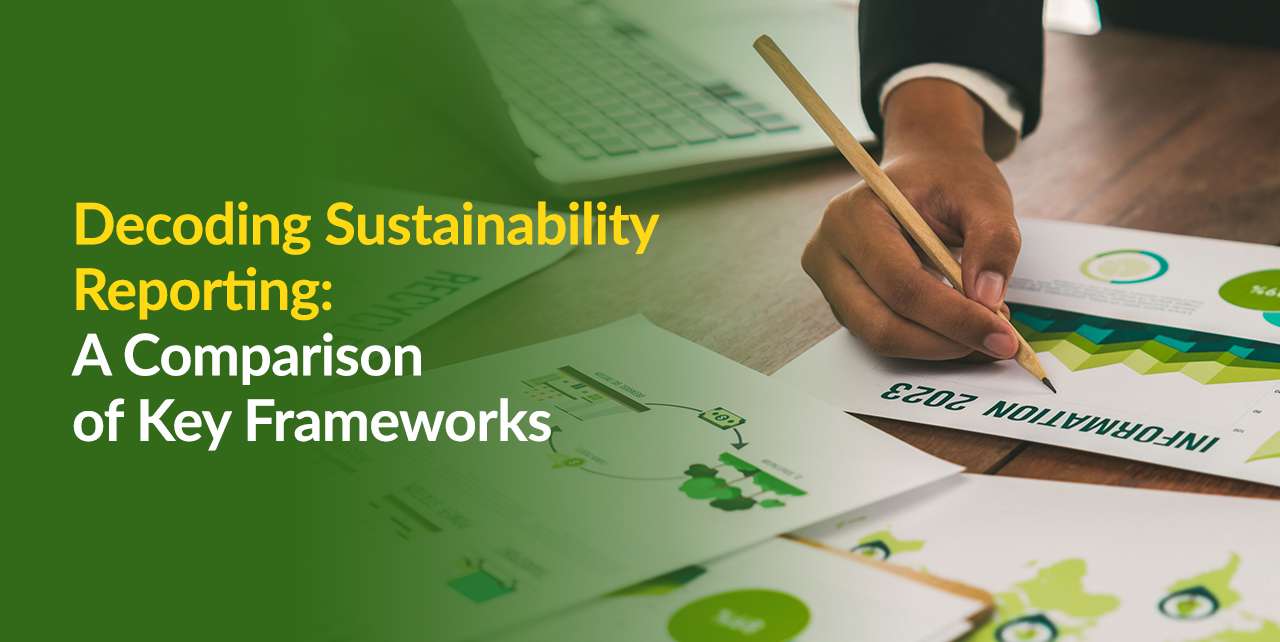In an era where businesses are increasingly recognizing the importance of sustainable practices, the need for transparent and standardized reporting on environmental, social, and governance (ESG) factors has never been greater. Sustainability reporting has evolved into a critical tool for companies to communicate their impact on the world beyond just financial metrics. Among the myriad of frameworks available, three prominent ones stand out: the Global Reporting Initiative (GRI), the Sustainability Accounting Standards Board (SASB), and the Task Force on Climate-related Financial Disclosures (TCFD).
Global Reporting Initiative (GRI)
Background
GRI, established in 1997, is one of the oldest and most widely adopted sustainability reporting frameworks globally. It provides a comprehensive set of standards, enabling organisations to measure and disclose their environmental, economic, and social performance.
Structure and Requirements
GRI’s framework is structured around a set of guidelines offering general and specific disclosures. It covers a wide range of topics, including governance, anti-corruption, emissions, labor practices, and community impact. GRI follows a modular approach, allowing companies to choose the specific indicators relevant to their industry.
Focus areas
GRI places a strong emphasis on inclusivity and stakeholder engagement. Its guidelines are designed to facilitate a holistic approach to sustainability, encouraging businesses to consider the social and environmental impacts of their operations. The framework is suitable for companies seeking a comprehensive and customizable reporting structure.
Sustainability Accounting Standards Board (SASB)
Background
SASB, founded in 2011, focuses specifically on industry-specific ESG factors that are likely to have financial impacts. Unlike GRI, SASB’s standards are industry-specific, providing a tailored approach to reporting for companies across various sectors..
Structure and Requirements
SASB standards are industry-specific and organized into five categories: Disclosure Topics, Accounting Metrics, Topics & Metrics, Technical Protocol, and Implementation Guide. The framework is designed to be industry-relevant, ensuring that companies report on factors that are financially material to their specific sector.
Focus areas
SASB’s strength lies in its specificity. By honing in on industry-specific issues, SASB helps companies streamline their reporting efforts, focusing on factors that are most relevant to their financial performance. This approach makes SASB particularly appealing to investors looking for financially material ESG information.
Task Force on Climate-related Financial Disclosures (TCFD)
Background
Established in 2015 by the Financial Stability Board, TCFD focuses specifically on climate-related financial disclosures. It aims to help companies and investors better understand climate-related risks and opportunities.
Structure and Requirements
TCFD’s framework comprises four pillars: Governance, Strategy, Risk Management, and Metrics and Targets. The focus is on disclosing the organisation’s governance around climate-related issues, the actual and potential impacts of climate-related risks and opportunities, and how these are managed.
Focus areas
TCFD is particularly relevant in a world increasingly concerned about climate change. By focusing on climate-related aspects, TCFD provides a clear and concise framework for companies looking to align their reporting with climate-related financial considerations. It is especially crucial for industries directly impacted by climate change, such as energy, transportation, and agriculture.
Starting from 2024, the International Sustainability Standards Board (ISSB), under the IFRS Foundation, will take over monitoring of progress on climate-related financial disclosures from the TCFD. The TCFD has been tracking adoption of its recommendations since they were first published.
Choosing the Right Framework: A Comparative Overview
Flexibility vs. Specificity
While GRI offers unparalleled flexibility with its modular approach, SASB and TCFD provide a more structured and industry-specific framework. Companies should consider the trade-off between customization and industry relevance based on their reporting priorities.
Materiality and Financial Impact
SASB and TCFD stand out in their emphasis on materiality and financial impact. SASB, by focusing on industry-specific material issues, ensures that reported data is financially relevant. TCFD, by concentrating on climate-related financial disclosures, addresses a critical aspect of materiality in the face of global climate concerns.
Stakeholder Engagement
GRI places a strong emphasis on stakeholder engagement, encouraging businesses to consider the broader societal impact of their operations. This makes GRI a suitable choice for companies prioritizing holistic sustainability and robust stakeholder relationships.
Climate Resilience
For organisations looking to assess and disclose their climate resilience, TCFD is the go-to framework. Its explicit focus on climate-related risks and opportunities makes it indispensable for industries vulnerable to climate change impacts.
Integration Possibilities
Some companies may find value in adopting a combination of frameworks to achieve a holistic view of their sustainability performance. For example, using GRI for comprehensive reporting, SASB for industry-specific materiality, and TCFD for climate-related aspects.
Businesses must carefully evaluate their priorities, industry nuances, and reporting objectives. The choice between GRI, SASB, and TCFD should align with the organisation’s values, stakeholder expectations, and the materiality of ESG factors to its financial performance. The ultimate goal is not just compliance but creating a reporting strategy that enhances transparency, drives positive impact, and builds trust with stakeholders in an increasingly sustainability-conscious world.
Sources:
The State of Sustainability Reporting – A Consulting Project by National University of Singapore (NUS) MBA students
https://www.globalreporting.org/
https://sasb.org/
https://www.ifrs.org/sustainability/tcfd/


